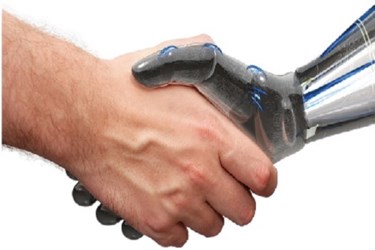Robotic Systems Help Meet Food-Safety Standards And Consumer Demands
By Isaac Fletcher, contributing writer, Food Online

The modern landscape of the food industry presents many challenges for manufacturers, but by implementing automated and robotic systems into production, brand owners can improve food safety, accommodate a wide array of consumer needs, and create more-efficient operations.
According to reports from the Center for Disease Control and Prevention, foodborne illnesses are on the rise. Each year, about one in six people in the U.S. gets sick from consuming contaminated foods. FSMA is designed to give the FDA the power to regulate the growing procedures of food, its harvesting, manufacturing, and processing, which opens the door to an overhaul of U.S. food production.
Food safety is not the only concern for brand owners. With consumers spending roughly $1.8 trillion per year on food, the growing demands for faster deliveries and increased varieties are giving manufacturers new goals to strive for. To accommodate a variety of demands and up the standard of food safety and traceability, plant, distribution, and supply chain managers are embracing automation and robotic systems at an unprecedented rate.
Related: How Robotics Is Tackling Some Of The Food Industry’s Biggest Headaches
Food industry profit margins are currently being stressed by high labor costs, space utilization, SKU proliferation, and the aforementioned health and safety issues. To get the most out of a production operation, managers need to use an optimal amount of labor, utilize all space effectively, and enhance efficiency in all areas of operation. New challenges have also arisen through the advents of home delivery and retailers requiring more frequent, smaller deliveries.
Due to manual applications of food handling being accompanied with higher rates of error and food contamination, material-handling, robotic systems are being implemented into many production lines in order to meet new standards, regulations, and consumer demands. Within distribution and supply chain departments, managers are experiencing higher revenues, improved operational efficiency, and increased product throughput through use of automated and robotic solutions.
Additional advantages afforded through use of robotics in food production include:
- Higher Levels Of Food Quality — With many foods needing to be processed in harsh environments not ideal for manual labor, such as extreme cold, and low levels of oxygen, robotic systems are a critical component in ensuring products are of the highest possible quality.
- Improved Consistency — Since robotic systems are capable of performing actions precisely and consistently many times in a row, they can help manufacturers reduce waste and improve yield since there will be fewer discarded products. By using a robotic system, manufacturers can see up to a 3 percent improvement in yield depending on the application.
- Safer Working Conditions — Aside from the ability to work tirelessly in harsh environments, robotic systems perform potentially hazardous tasks that require sharp and dangerous equipment, eliminating the need for workers to endanger themselves.
- Enhanced Food Safety — Use of robotics eliminates the opportunity for contaminants to be transferred from workers to food products.
- Better Functionality — Robotic systems are able to make precise calibrations that may be beyond the abilities of a human operator. They also foster a more sterilized environment, provide accurate counts during production, and offer better methods of tracking and traceability.
